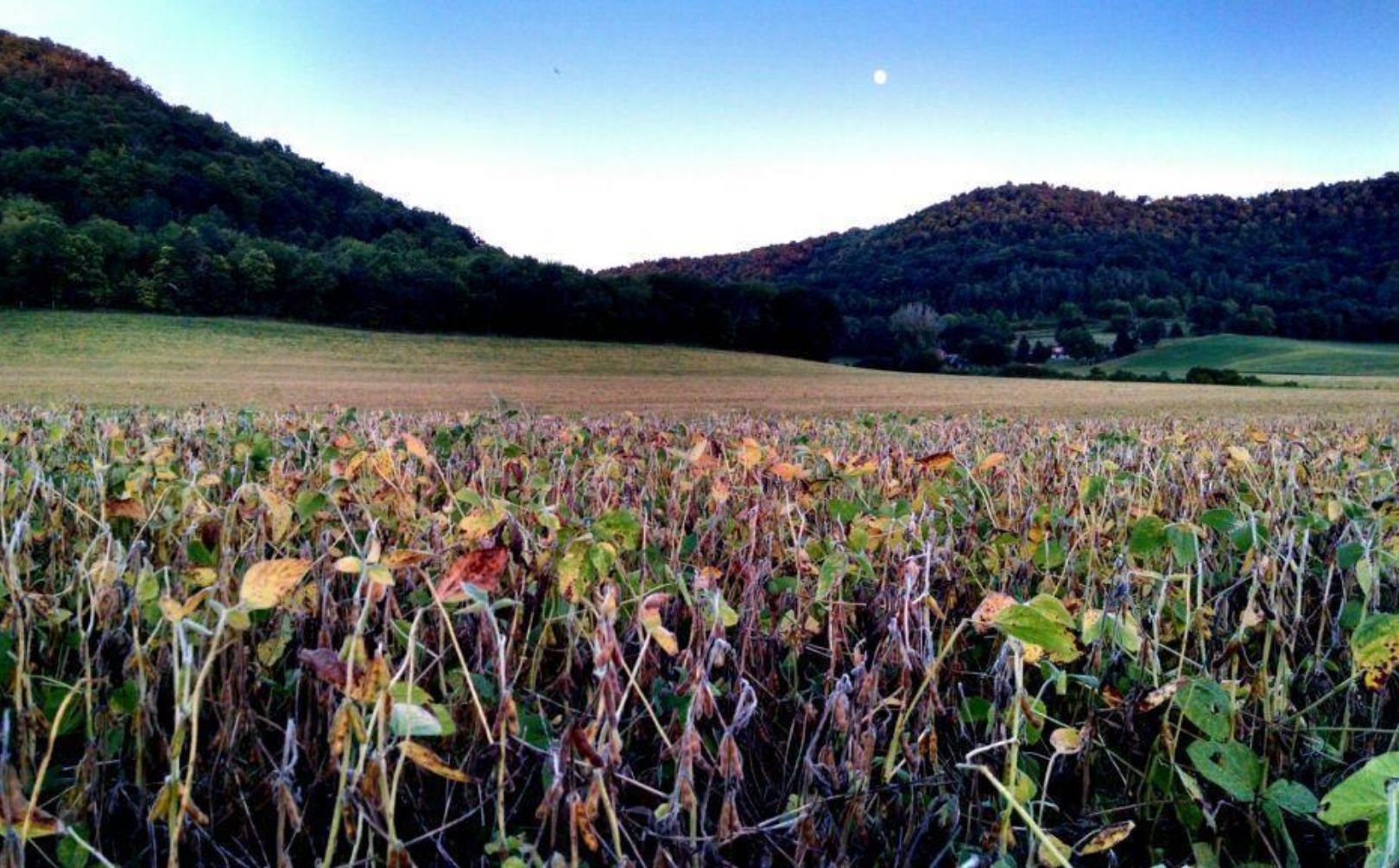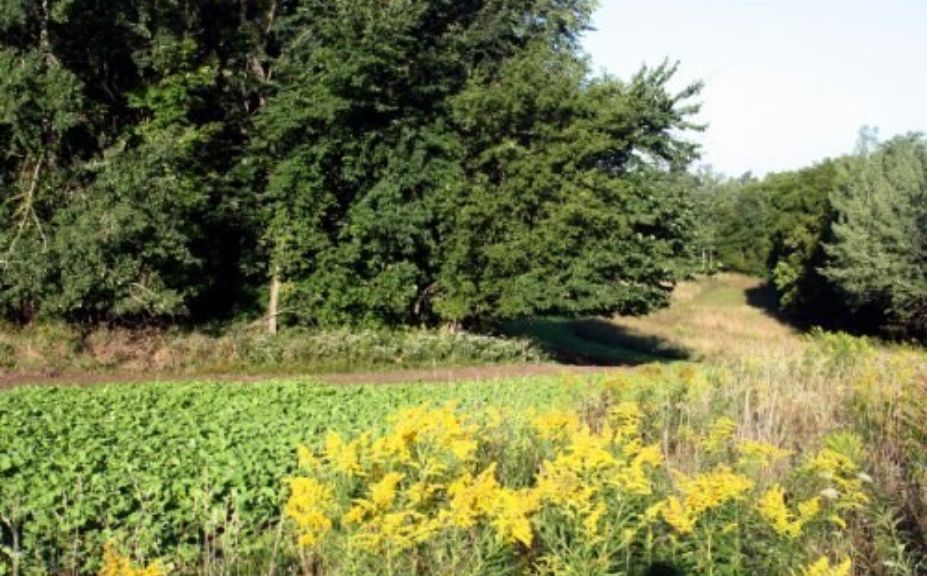
The leaves of soybeans are beginning to show the first signs of maturity and the last cutting of hay is just around the corner. The annual shift of whitetail habitat is starting to take place! What does that mean? It means that the buck portion of the deer population is about to shift from it's Summer habitat, to it's Fall habitat. This is something I have enjoyed observing and writing about for many years, largely in part by first watching Summer buck patterns in MI's largely agricultural "Thumb" region starting in the early 90s. I enjoyed sitting in a lawn chair with snacks, drink and binos in hand, and then watching up to 20 bucks at a time enter the ag fields. The difference then, is that size of a bachelor group would include 17 yearlings, a couple two year olds and a three year old-but they were still fun to watch! Trail cams weren't even available yet, so we had to rely on hunting season observations, but it was always amazing where those particular "older" bucks would re-locate to. Our strategy? To have about 15-20 stands hanging in any woodlot we could get permission to hunt, and then let the intensity and size of the rubs tell us where to hunt. We were able to shoot the majority of those bucks we watched during the summer, and we discovered they were an average of a 1/2 mile to a mile away from where they were residing during the Summer.
For the past several years I have been strongly recommending to my clients to plan for, and even writing about the annual shift of whitetail habitat, as bucks move from their preferred Summer range, to their Fall range. Even well-known outdoor writer Mark Kenyon is picking up on the "Shift" of whitetail movement in this article, and the QDMA has finally revealed GPS tracking research which documents evidence of the Shift in this article. There is a lot of reading that you can absorb about the Shift within Success By Design series of books, as well as this article I published in August of last year, "The Whitetail Shift Of Summer To Fall Habitat", and this one in 2012, "Is The Land You Hunt a Cold or Warm Season Whitetail Paradise". It is very rewarding that after decades of discovery, observation and experience, "The Shift" is starting to be noticed and validated by other whitetail professionals! Also, like every September, I get excited to both witness the Shift first hand, as well as to urge you to plan accordingly with your hunting season efforts.
Shift Details
Sure, bucks need to separate from their large Summer bachelor groups, as various chemical changes within their bodies dictate a need for a higher level of territorial reclusiveness, but that's only a small portion of the shift of whitetail habitat. It really boils down to 2 completely separate habitat needs:
1. Summer Habitat:
Open, mature hardwoods feature the perfect habitat for Summer buck range. Lower daytime, shaded temperatures and fewer bugs are a huge advantage. Also, there is some indication that during the lazy growing season, deer in general (outside of fawn hiding cover) enjoy more open daytime bedding cover for a higher ability to observe predators. Soybeans, alfalfa and young corn are also preferred warm-season food sources for agricultural settings, and the forage diversity of hardwood and lowland combinations can be perfect for public land bachelor groups. Bucks do their best to avoid damaging their antlers during the velvet phase, and an open, shaded understory adjacent to high quality Summer food sources is perfect!

2. Fall Habitat:
If you think about it, what a buck's habitat needs are during the Fall, is drastically different from what he needs during the Summer. I have had very good success keying on extremely heavy security cover, often hundreds of yards or more away from any type of Summer buck habitat. Fall habitat is thick, diverse and adjacent to Fall food sources. Fall food sources of various greens (brassicas, cereal grains, peas) as well as the large grains of November corn and December soybeans can be a true buck magnet when combined with Fall security cover within a 1/4 mile of the food source.
How Should This Effect Your Hunting Activities?
Summer bucks are cool to watch! I personally have had a passion spanning over 2 decades for watching Summer bucks, and getting to know them as they shift to their Fall habitat. I can offer 1 important tip: If you focus on where you see those bucks during the Summer months, you will constantly be behind in the game of the annual shift of whitetail habitat. Instead of playing catch-up, plan ahead for the annual shift! If you have private land than develop the habitat to help you capture re-locating mature bucks, and if you hunt public land-find those same Fall habitat conditions. However, try to focus greatly on those Fall habitats for the bulk of your hunting efforts.
I love to take a stab at a mature buck still in his Summer pattern, but just keep in mind that this particular movement is fleeting fast during September and early October. Remote Fall bedding cover, heavy-cover travel corridors to distant cool-season food sources and high quality secure corridors paralleling major food sources are all great locations to hang treestands that can be used for the bulk of the hunting season. A variety of stand locations that relate to heavy bedding cover, travel corridors and Fall food sources can also be used with a variety of wind directions, as well as the timing of both morning and evening prioritization of hunting opportunity.
Conclusion
The beans are turning as they approach their maturity rates, and the last cutting of hay is just around the corner. The Summer patterns of feeding and cover will be changing soon and I hope you are ready! A large portion of my habitat and hunting success has hinged on the shift of whitetail habitat, dating back to a time without game cameras. Can you believe that-no game cameras? Yes, that tells you a little bit about my age, but more importantly how long I have been enjoying the late Summer movement of individual mature bucks. It's real...it happens every year...and if you plan for it, it can be one of the biggest single reasons for your hunting season success this season.